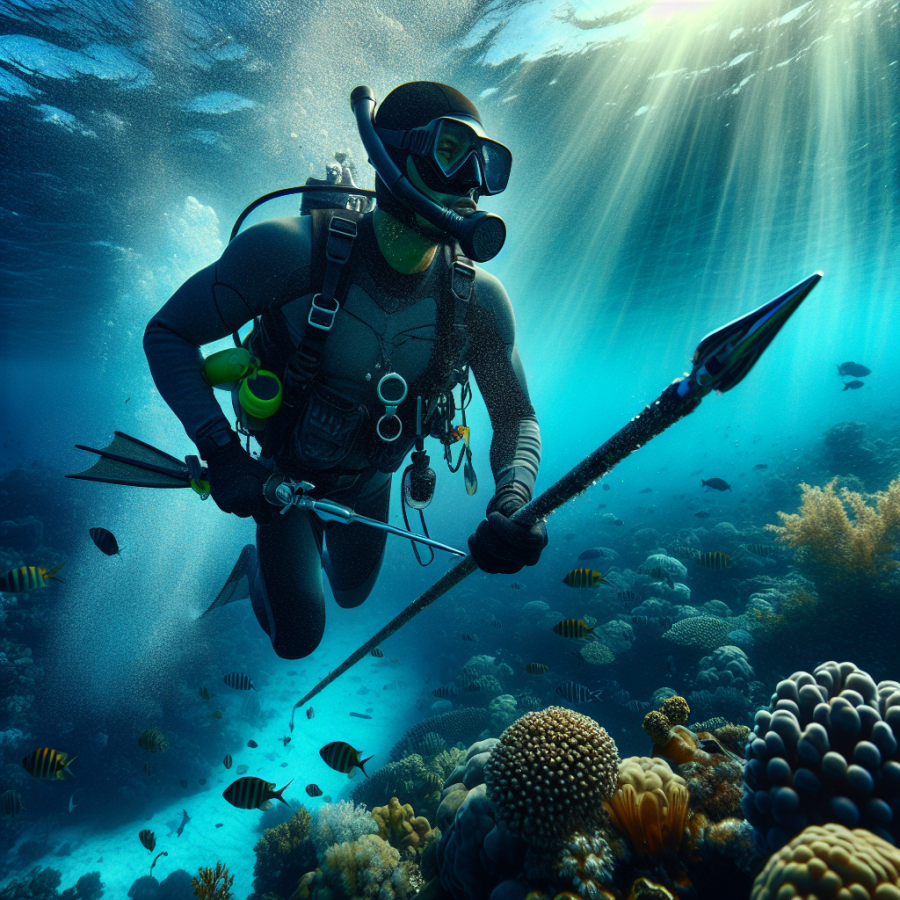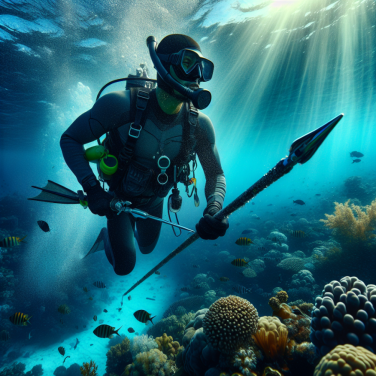Essential Spearfishing Techniques for Stealth and Precision
To master the art of underwater hunting, spearfishers must hone a range of techniques that enable them to move through the water with negligible disturbance while maintaining utmost accuracy when targeting their prey.
One of the most important skills in spearfishing is learning to perfect your duck dive. This initial dive beneath the surface should be smooth and quiet to avoid scaring fish away. Start with a deep breath and with arms extended forward, push the water to propel yourself down. Your body should follow a fluid, straight line to minimize splash and noise. Fine-tune this movement to enter the water with little more than a ripple.
Once submerged, your ability to equalize pressure in your ears is crucial. As you descend, regularly pinch your nose and gently blow to equalize the pressure in your middle ear. This technique, known as the Valsalva maneuver, will help you avoid discomfort and potential ear injuries, allowing you to focus on the hunt.
Buoyancy control is another skill that needs constant refining. By managing your buoyancy, you can stealthily navigate through different water columns without expending unnecessary energy. A neutral buoyancy is ideal, helping you to hover in the water without sinking or floating, thereby remaining concealed from the fish.
Moving through the water with minimal disturbance is vital in spearfishing. This entails a relaxed yet powerful finning technique. Flutter kicks should be long and slow, originating from the hips rather than the knees, to guide you through the water quietly. Conserving energy during your swim will allow you to stay underwater longer and increase your chances of a successful hunt.
The most critical moment in spearfishing is, of course, the shot. Precision comes from a steady hand and a clear eye. Before taking the shot, ensure that your spear gun is correctly lined up and that you are within an optimal range for accuracy and the spear's power. Be patient and wait for the right moment when the fish is unaware and within the radius of an accurate shot.
In addition to these techniques, maintaining a high level of physical fitness will significantly impact your overall performance. A strong cardiovascular system will increase your breath-hold capacity, allowing for longer dives, while muscular endurance can contribute to more powerful finning and swimming, enhancing your stealth approach.
Lastly, one of the spearfisher's crucial techniques is the art of camouflage and blending in with the environment. Wear appropriate gear to match your hunting surroundings and avoid sudden movements that could catch the attention of your prey.
Read also:
Croquet: A Classic Lawn Game's Enduring Charm
Advanced Gear and Tactics for the Successful Underwater Hunter
As the underwater world unfolds its mysteries to the adept spearfisher, a mastery of advanced gear and tactics can elevate the hunt from a recreational pursuit to an art form. Successful underwater hunting is not just about patience and skill; it's often about having the right equipment and knowing how to leverage it under various conditions.
Starting with gear, the spear gun itself is a spearfisher's best ally. Experienced hunters often opt for a selection of guns of different lengths and power mechanisms. Pneumatic and band-powered guns each have their own advantages depending on the situation. For targeting swift species in open water, a longer gun with a range extender can make all the difference. Conversely, in the complex terrain of a reef, a shorter, more maneuverable gun is advantageous.
Equally important, reels and lines can make or break a successful hunt. Use a dyneema or monofilament line for the best combination of strength and low visibility under water. Reels must balance the ease of draw with reliable retraction to manage the line after a shot has been taken. The subtleties of choosing a reel with the right drag mechanism can enhance shot accuracy and improve the handling of the fish once speared.
Advanced spearos often modify their fins for optimal performance. Tailoring fin stiffness and blade length to one's own physique and hunting style allows for more efficient propulsion and swifter movement underwater. Choosing the right material - whether it be fiberglass, carbon fiber, or plastic - can help spearfishers conserve energy during long hunts.
Beneath the waves, stealth and strategy are as crucial as the gear a spearfisher carries. The most successful hunters know how to approach their prey without alarming it. Techniques such as ‘aspetto’, waiting motionless to ambush approaching fish, or ‘agguato’, a careful stalk leading into a surprise attack, require practice and patience. Mastering these tactics means adapting to the behavior patterns of target species, being aware of one's own shadow and reflections, and even managing the sound of one's own breath through the snorkel.
Camouflage can be pivotal as well. Wearing a suit that blends in with the underwater environment can get you closer to your prey. Today, specialized suits are designed not just for temperature protection but for mimicking the textures and colors of the sea bed or the kelp forest, offering an edge in concealing one’s presence from the target species.




